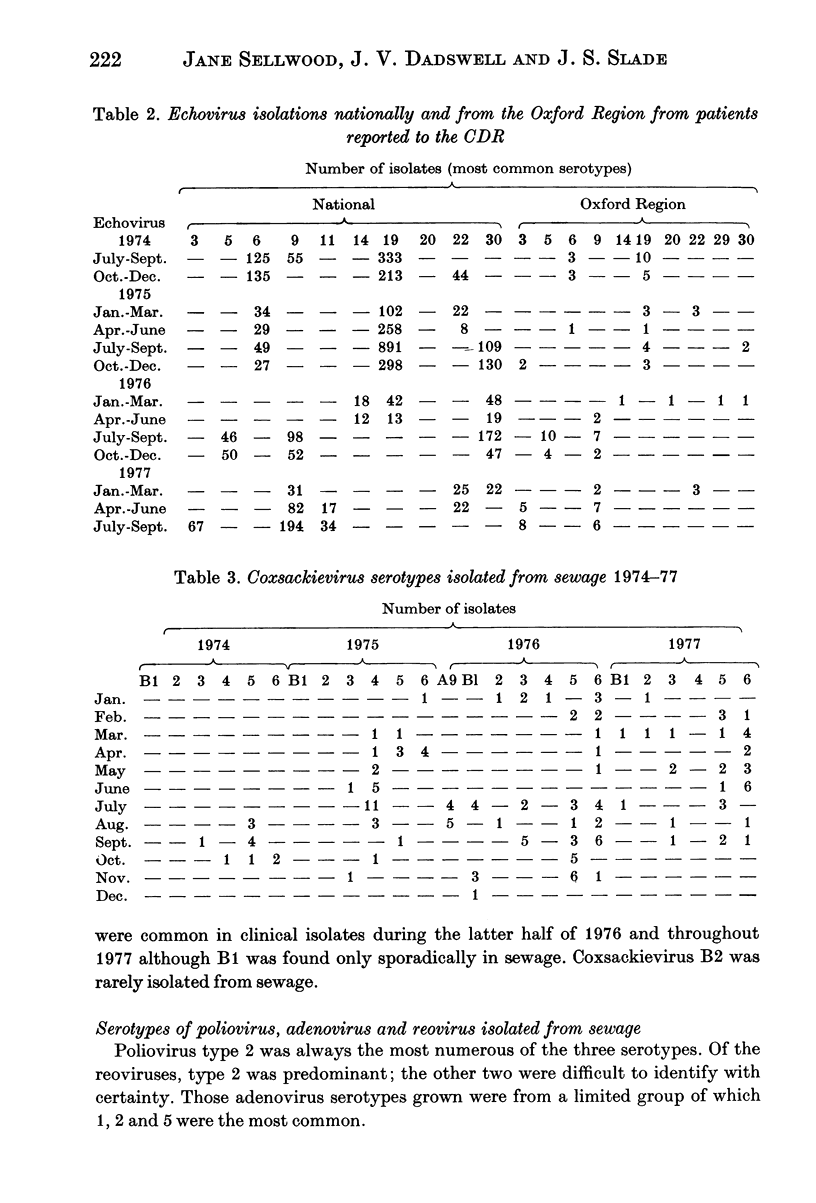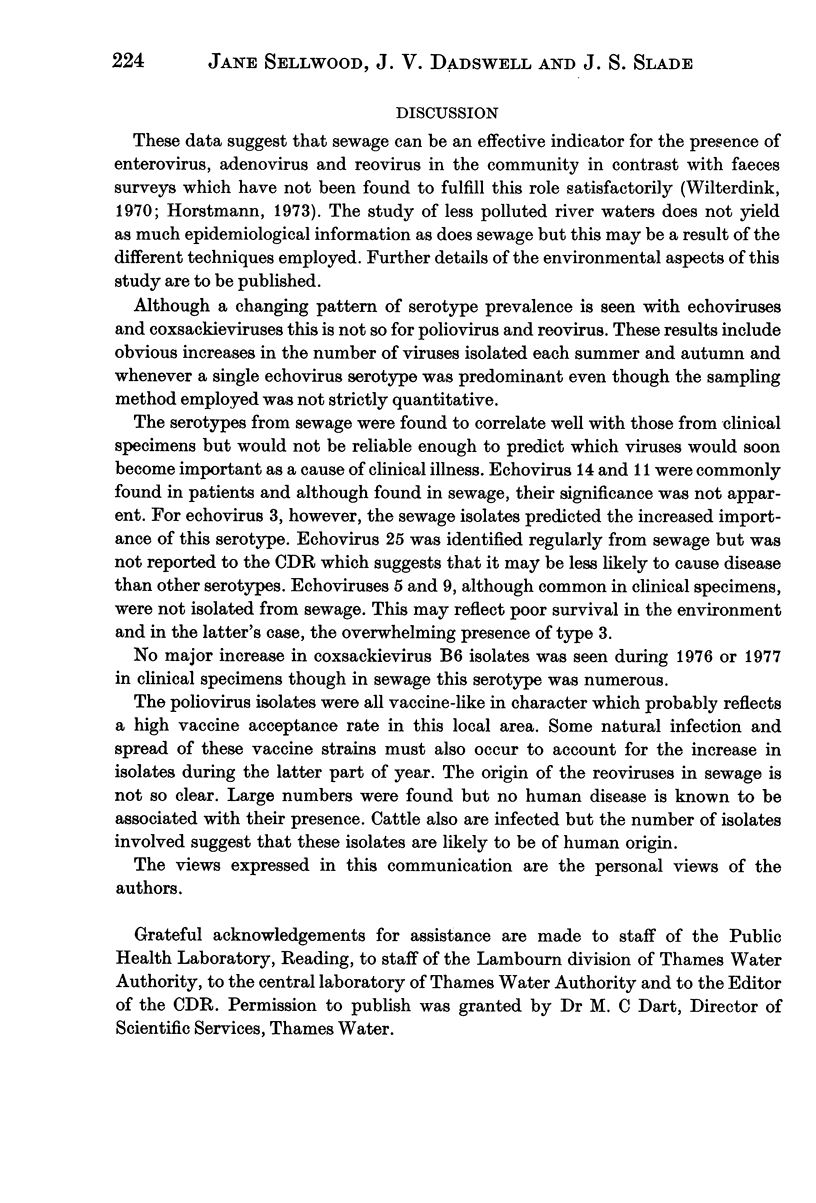Abstract
The results of a three year study of the viruses isolated from sewage by means of five tissue culture types are reported. The enteroviruses identified demonstrated a seasonal pattern which was similar to that of clinical isolates. Echoviruses and coxsackieviruses displayed a changing pattern of dominant serotypes in both sewage and clinical isolates; echovirus 6, 19, 3 and coxsackievirus B4, B5, A9 successively became the most common serotypes. The poliovirus in sewage was all vaccine-like in character. Reovirus, type 2 was abundant; adenovirus, of several serotypes, were the least often identified.
Full text
PDF








Selected References
These references are in PubMed. This may not be the complete list of references from this article.
- BLOOM H. H., MACK W. N., KREUGER B. J., MALLMANN W. L. Identification of enteroviruses in sewage. J Infect Dis. 1959 Jul-Aug;105(1):61–68. doi: 10.1093/infdis/105.1.61. [DOI] [PubMed] [Google Scholar]
- Barron A. L., Olshevsky C., Cohen M. M. Characteristics of the BGM line of cells from African green monkey kidney. Brief report. Arch Gesamte Virusforsch. 1970;32(4):389–392. doi: 10.1007/BF01250067. [DOI] [PubMed] [Google Scholar]
- CLARKE N. A., KABLER P. W. HUMAN ENTERIC VIRUSES IN SEWAGE. Health Lab Sci. 1964 Jan;1:44–50. [PubMed] [Google Scholar]
- HONIG E. I., MELNICK J. L., ISACSON P., PARR R., MYERS I. L., WALTON M. An endemiological study of enteric virus infections: poliomyelitis, coxsackie, and orphan (ECHO) viruses isolated from normal children in two socioeconomic groups. J Exp Med. 1956 Feb 1;103(2):247–262. doi: 10.1084/jem.103.2.247. [DOI] [PMC free article] [PubMed] [Google Scholar]
- Horstmann D. M., Emmons J., Gimpel L., Subrahmanyan T., Riordan J. T. Enterovirus surveillance following a community-wide oral poliovirus vaccination program: a seven-year study. Am J Epidemiol. 1973 Mar;97(3):173–186. doi: 10.1093/oxfordjournals.aje.a121498. [DOI] [PubMed] [Google Scholar]
- LAMB G. A., CHIN T. D., SCARCE L. E. ISOLATIONS OF ENTERIC VIRUSES FROM SEWAGE AND RIVER WATER IN A METROPOLITAN AREA. Am J Hyg. 1964 Nov;80:320–327. doi: 10.1093/oxfordjournals.aje.a120482. [DOI] [PubMed] [Google Scholar]
- Pittler H., Höpken W., Knocke K. W. Enteroviren und Adenoviren im Abwasser. Methode des Nachweises und epidemiologische Studie 1963-1965. Zentralbl Bakteriol Orig. 1967;204(1):33–48. [PubMed] [Google Scholar]
- Pálfi A. B. Virus content of sewage in different seasons in Hungary. Acta Microbiol Acad Sci Hung. 1971;18(4):231–237. [PubMed] [Google Scholar]
- RAMOS-ALVAREZ M., SABIN A. B. Characteristics of poliomyelitis and other enteric viruses recovered in tissue culture from healthy American children. Proc Soc Exp Biol Med. 1954 Dec;87(3):655–661. doi: 10.3181/00379727-87-21474. [DOI] [PubMed] [Google Scholar]
- SABIN A. B. Behavior of chimpanzee avirulent poliomyelitis viruses in experimentally infected human volunteers. Am J Med Sci. 1955 Jul;230(1):1–8. doi: 10.1097/00000441-195507000-00001. [DOI] [PubMed] [Google Scholar]
- Wilterdink J. B., Weiland H. T., Verlinde J. D. A longitudinal study on the significance of examination of sewage for the presence of poliovirus in the population. Arch Gesamte Virusforsch. 1970;32(1):82–90. doi: 10.1007/BF01241523. [DOI] [PubMed] [Google Scholar]


